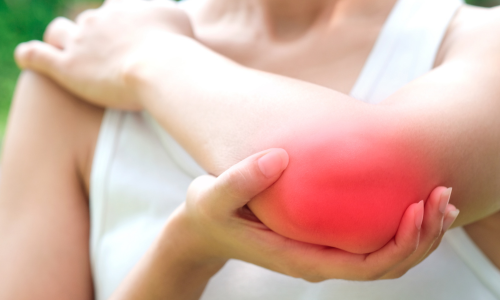Tennis Elbow
Tennis Elbow
Understanding Tennis Elbow: Causes, Symptoms, and Treatment
Introduction:
Tennis elbow, medically known as lateral epicondylitis, is a common condition that affects millions of people worldwide. Despite its name, tennis elbow isn’t limited to tennis players; it can occur in anyone who repeatedly uses their forearm muscles, leading to pain and discomfort in the elbow and arm.
Causes:
Tennis elbow is typically caused by overuse of the forearm muscles and tendons, leading to small tears in the tendons that attach to the lateral epicondyle (the bony bump on the outside of the elbow). While playing tennis with poor technique can contribute to the condition, it can also be caused by activities such as painting, typing, gardening, or using tools that involve repetitive wrist and arm movements.
Symptoms:
The hallmark symptom of tennis elbow is pain and tenderness on the outside of the elbow, which may gradually worsen over time. Other common symptoms include:
- Pain that radiates down the forearm.
- Weakness in the affected arm.
- Difficulty gripping or lifting objects.
- Stiffness in the elbow joint.
- Pain exacerbated by activities that involve gripping or twisting motions.
Diagnosis:
Diagnosing tennis elbow typically involves a physical examination by a healthcare professional. They may also recommend imaging tests such as X-rays or MRI scans to rule out other potential causes of elbow pain.
Treatment:
Treatment for tennis elbow focuses on relieving pain, reducing inflammation, and promoting healing. Common treatment options include:
- Rest: Avoiding activities that aggravate the condition can help prevent further damage to the tendons.
- Ice therapy: Applying ice packs to the affected area can help reduce pain and inflammation.
- Pain medication: Over-the-counter pain relievers such as ibuprofen or acetaminophen may help alleviate discomfort.
- Physical therapy: Specific exercises and stretches can strengthen the forearm muscles and improve flexibility.
- Brace or splint: Wearing a brace or splint can provide support to the elbow and reduce strain on the tendons.
- Corticosteroid injections: In severe cases, corticosteroid injections may be recommended to reduce inflammation and pain.
- Platelet-rich plasma (PRP) therapy: This innovative treatment involves injecting the patient’s own blood into the affected area to promote healing.
Prevention:
To prevent tennis elbow, it’s essential to:
- Use proper technique and equipment during activities that involve repetitive arm movements.
- Warm up before exercising or engaging in physical activities.
- Strengthen forearm muscles through targeted exercises.
- Take frequent breaks to rest and stretch the muscles and tendons.
Conclusion:
Tennis elbow can be a painful and debilitating condition, but with proper treatment and preventive measures, most people can recover fully and return to their usual activities. If you’re experiencing persistent elbow pain, it’s essential to consult with a healthcare professional for an accurate diagnosis and personalized treatment plan.

Book an Appointment
Physiotherapy: Your Path to Pain Relief
Physiotherapists are movement experts who can help manage and reduce pain. Through manual therapy, exercise programs, and education, they can improve your mobility and function, empowering you to live an active, pain-free life.
